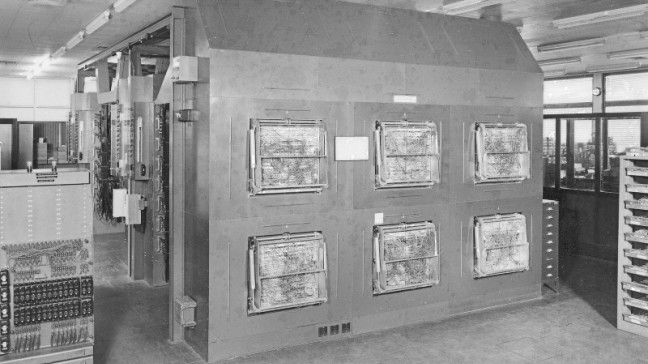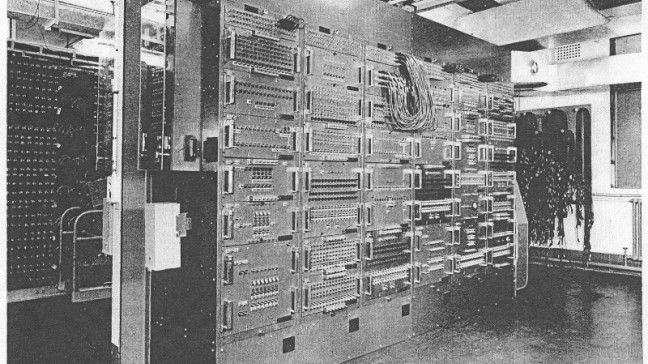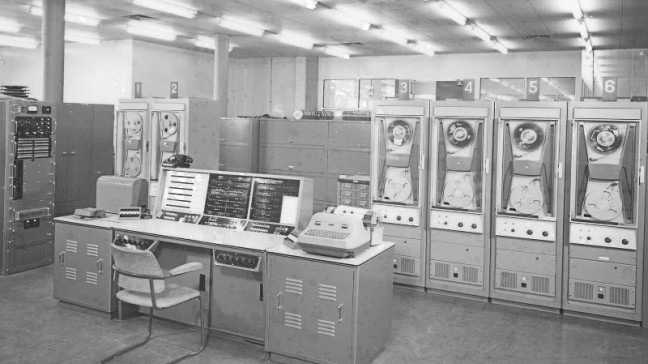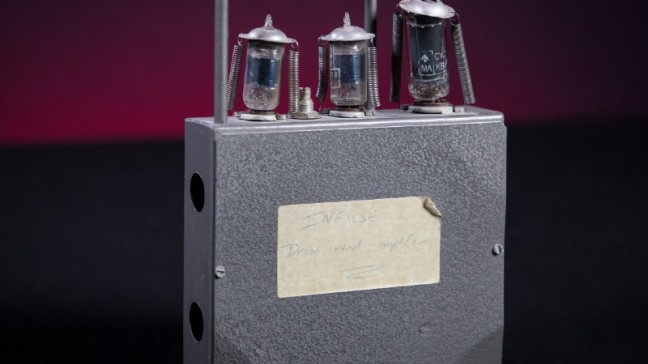INFUSE
As part of the Australian Signals Directorate’s (ASD) Declassification Program, ASD is releasing 64 previously classified records associated with INFUSE, our first electronic computer. This release tells the story of why and how ASD acquired INFUSE, providing unique insights into the inner workings of the organisation and the people within it.
INFUSE was operated at our Albert Park Barracks headquarters from 1958 to 1966. Designed and built in the United Kingdom, it was an evolution of the WW2-era COLOSSUS, which was arguably the world’s first computer. It employed 3,500 electronic vacuum tubes in its central processing unit (CPU), and consisted of two chassis, each eight cubic metres in size, along with 24 power conversion units that were each one cubic metre in size. It’s 'clock speed' was rated at 100 KHz, while the 'clock speed' of a modern smart phone CPU is over 2,000,000 KHz. It had access to 786,432 bits of storage.
The computer was programmed by inter-connecting the various processing elements of its CPU with brown coaxial cables. At the time of its use, one programmer said that INFUSE looked like "a whale beached in a shallow sea of brown spaghetti". It would take a number of weeks for the computer to be re-configured from running one program to another.
Our precursor organisation used INFUSE on a range of cryptanalytic problems. While it suffered from reliability problems, it paved the way for ASD's future as one of Australia's leading users of high performance computing.
Today, only one small fragment of our first computer remains – a small amplifier module (pictured below). However, we know what the overall computer looked like thanks to vivid descriptions like the one included above, and because it was almost identical to the British COLOROB computer, operated by GCHQ. Images of COLOROB are included here, courtesy of GCHQ.



